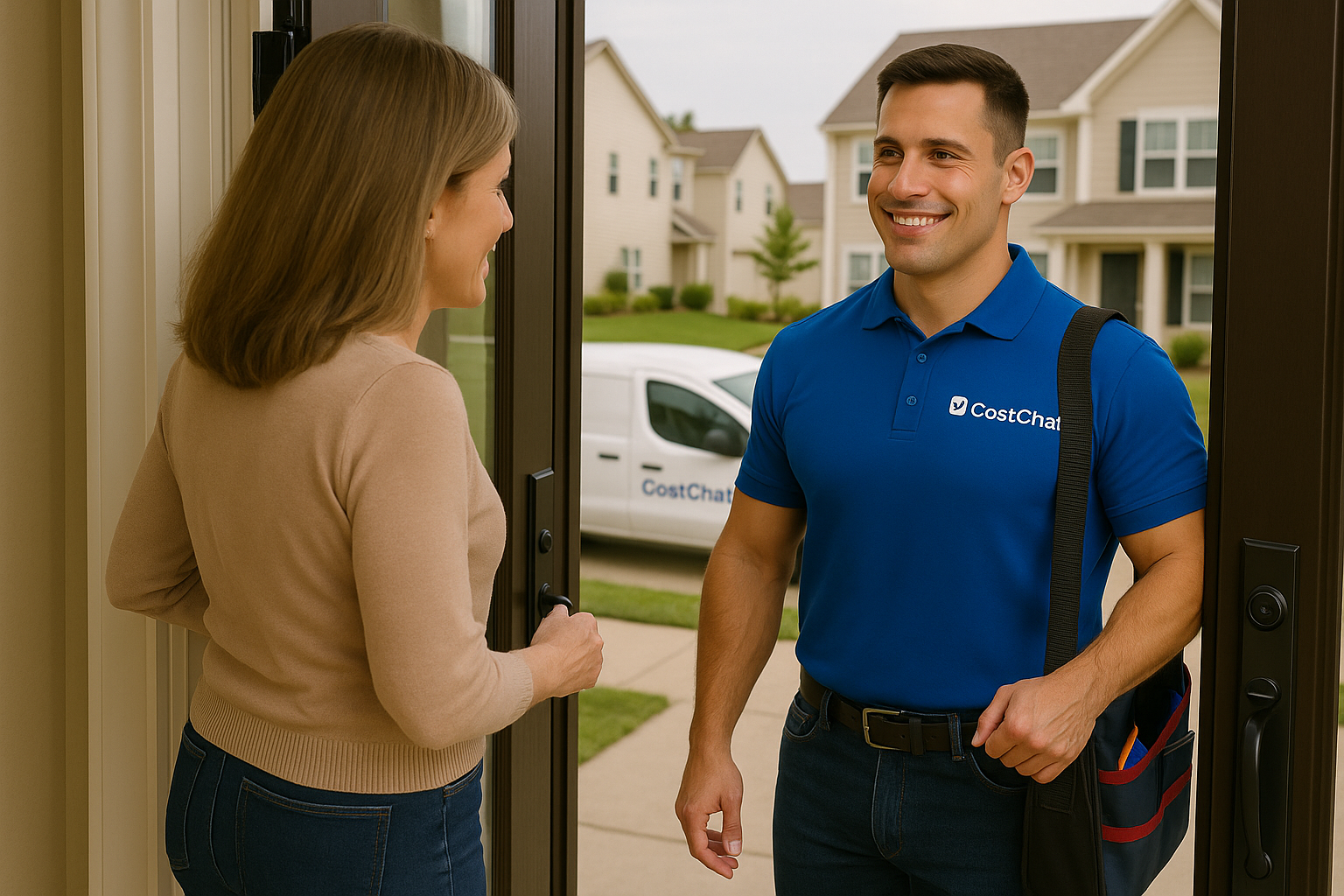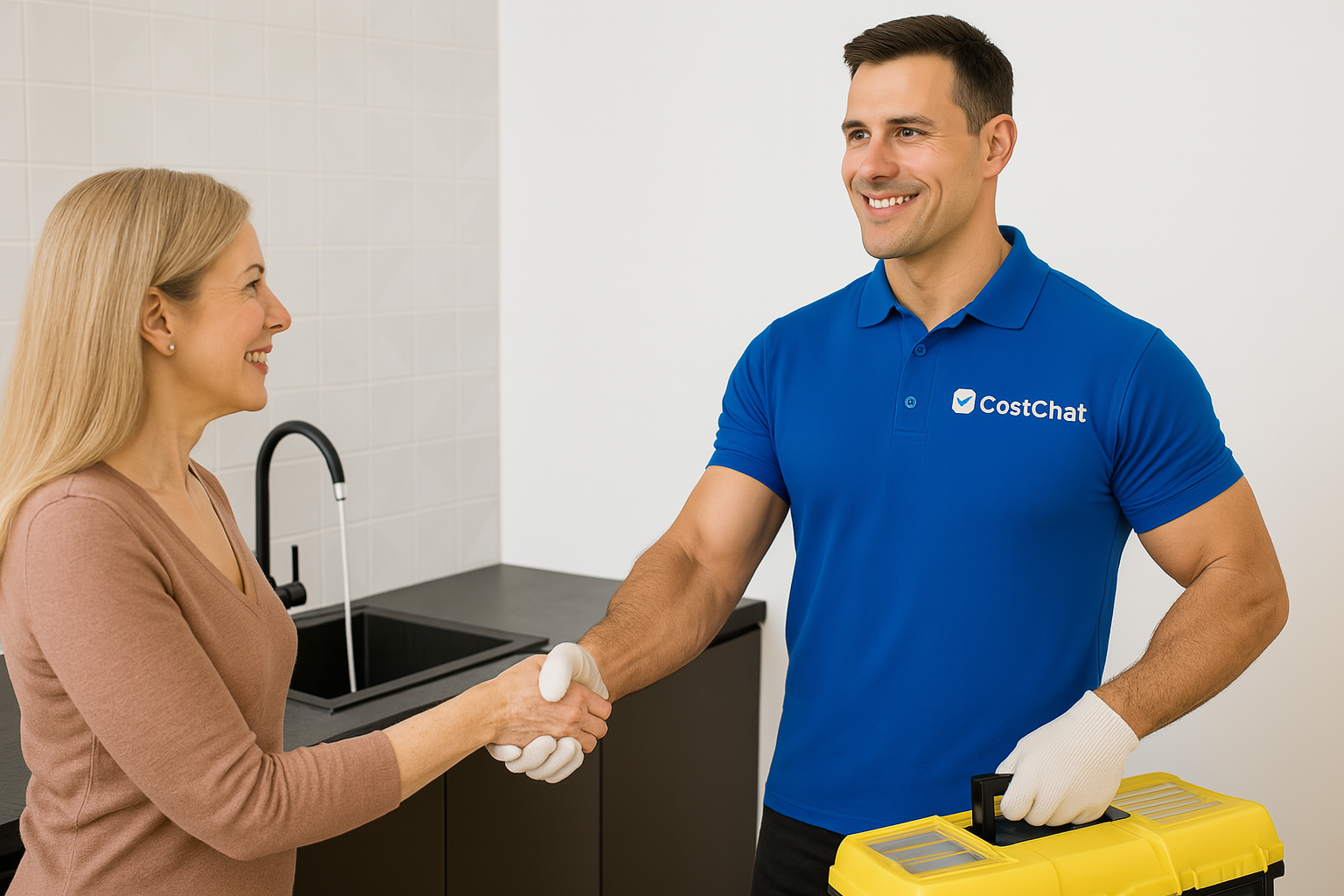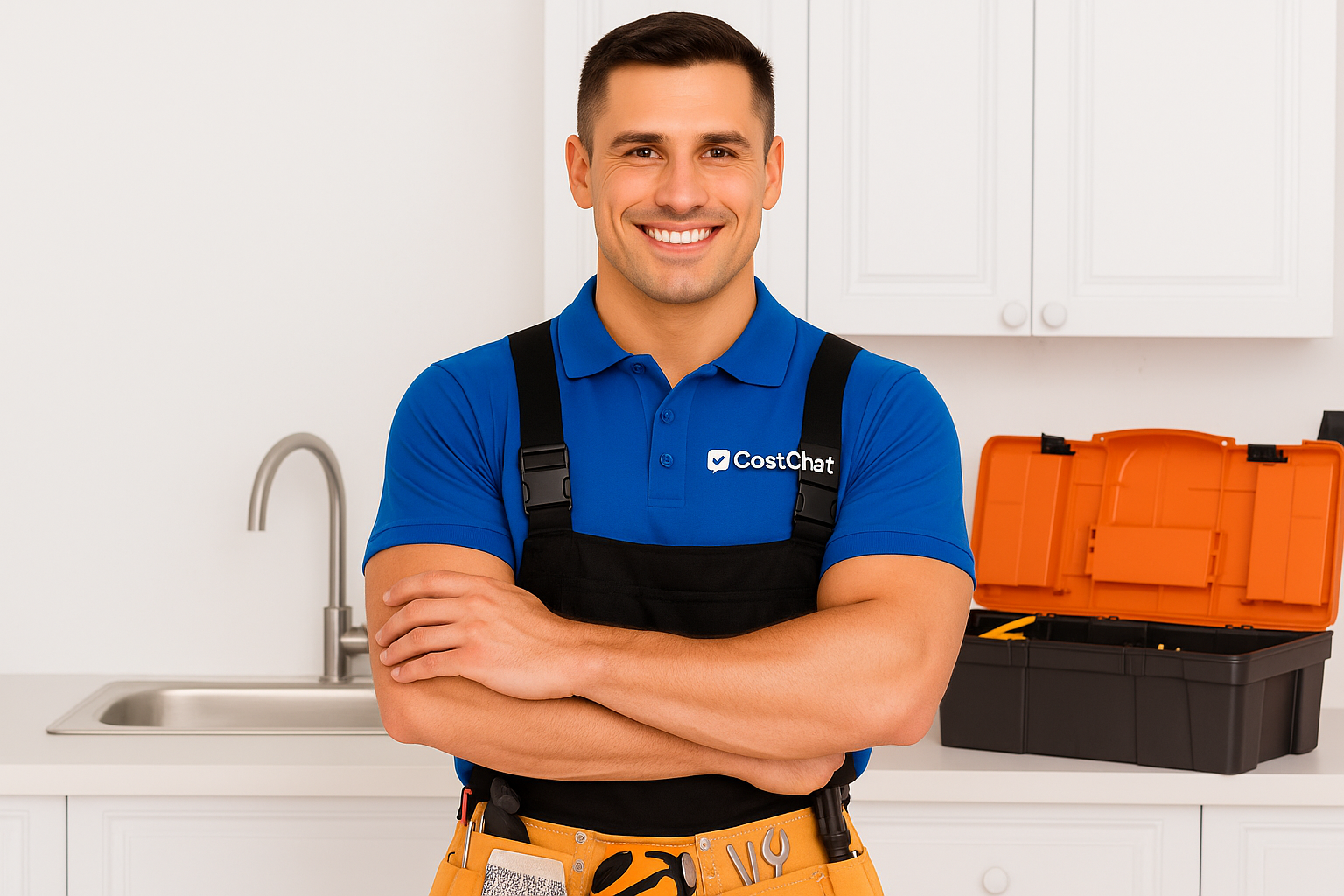
Fast, Reliable Plumbers Pros in San Bernardino, CA
How to Hire Top Rated Plumbers Pros in San Bernardino, CA
Get a Free Online Estimate
Share your project details and receive a free online estimate from top-rated local pros. Not sure what it should cost? Check our Cost Guide.
Get EstimateCompare Local Quotes
View multiple free online quotes side by side. Use our Price Guide to understand labor rates, materials, and service fees before you hire.
Compare NowBook Best Top Rated Pros
Choose a licensed pro with confidence. Lock in your date after reviewing your free estimate and browsing our expert Cost Guide for peace of mind.
Book NowDid You Know?
74% ⚠️
of homeowners face surprise costs and delays — mostly from hiring unvetted pros. Don’t risk it. Hire trusted experts today.
Hire Top Rated & Verified ProsWork With Verified & Trusted Pros 🛡️
Save time, avoid costly mistakes, and experience reliable, top-quality service for every home project. Book now for priority scheduling and peace of mind.
Hire a Top Rated ProGet Instant Online Estimate of Plumbers in
🔎 CostChat Online Cost Estimator
Describe your project and location to get an instant estimate.
Your Essential Guide to Plumbers Services in San Bernardino, CA
Welcome, San Bernardino homeowners! We understand that maintaining a comfortable and efficient home is a top priority. Plumbing issues can be stressful, especially when you're unsure of the causes or the best course of action. This guide is designed to be your comprehensive resource for understanding plumbing in San Bernardino, from common issues specific to our unique environment to navigating regulations and finding reliable professionals. Let's ensure your home's plumbing is in top shape.
Table of Contents
- San Bernardino, CA's Unique Plumbing Landscape: Why Local Expertise Matters
- Neighborhood Hotspots: Micro-Local Plumbing Risks & Solutions
- Common Problems & Triggers for a Professional Plumbing Call
- Navigating San Bernardino, CA's Regulations: Permits, Code & Professional Licensing
- Maximize Your Savings: San Bernardino, CA Plumbing Rebates & Incentives
- Choosing Your San Bernardino, CA Plumbing System: Models, Sizing & Smart Features
- The Cost of Plumbing in San Bernardino, CA
- Hiring San Bernardino, CA's Top-Rated Plumbing Professionals: Your Action Plan
- FAQs About Plumbing in San Bernardino, CA
San Bernardino, CA's Unique Plumbing Landscape: Why Local Expertise Matters
The Age & Character of San Bernardino, CA Homes: A Plumbing-Related Time Capsule
San Bernardino, CA, a city with a growing population of approximately 224,820 residents, boasts a diverse housing stock, with many homes dating from the mid-20th century through the 1980s. This rich history means many residences, particularly in established neighborhoods like the Historic Downtown area, Harriman Park, and parts of the University District, feature original plumbing infrastructure that requires specialized knowledge to maintain and repair.
- Mid-20th Century Homes (1940s-1960s): Often feature ranch-style and mid-century modern architecture. These homes commonly have galvanized steel piping, which is prone to internal corrosion and mineral buildup over time. This can lead to reduced water pressure and eventual leaks. Drain lines in these homes frequently consist of cast iron, which can crack or become blocked due to corrosion and sediment accumulation.
- Late 20th Century Homes (1970s-1980s): While newer, these homes may still incorporate materials that require attention. Plumbing systems from this era might use materials that, while better than galvanized steel, can still face issues related to age and San Bernardino's specific environmental factors.
The prevalence of older housing stock means homeowners in San Bernardino frequently encounter legacy plumbing systems. Understanding the materials and common issues associated with these eras is crucial for effective plumbing maintenance and repair.
Plumbing's Environmental & Utility Factors & Climate Impact on Your Plumbing System
San Bernardino's environment and water utility characteristics significantly influence plumbing performance and longevity.
- Water Quality: The San Bernardino Municipal Water Department (SBMWD) sources water primarily from the Bunker Hill Groundwater Basin. This water is characterized as relatively hard, meaning it contains a higher concentration of minerals like calcium and magnesium. Over time, these minerals can form scale deposits inside pipes, water heaters, and fixtures. This buildup can restrict water flow, reduce the efficiency of appliances, and potentially lead to premature system failure. Regular maintenance and water softening solutions may be necessary to mitigate these effects.
- Climate Impact: San Bernardino experiences a semi-arid climate with hot, dry summers and mild winters. While extreme cold is infrequent, unexpected cold snaps can pose a risk of frozen pipes, especially in exposed or poorly insulated areas. Furthermore, the region's clay soils can expand and contract with changes in moisture content, particularly during droughts followed by irrigation. This soil movement can stress underground plumbing lines, potentially causing cracks or breaks. Heavy rainfall, though rare, can also lead to flash flooding, overwhelming drainage systems and causing backups.
Awareness of these factors allows for proactive plumbing maintenance and preventative measures tailored to San Bernardino's unique conditions.
 Request a Quote
Request a QuoteNeighborhood Hotspots: Micro-Local Plumbing Risks & Solutions
San Bernardino's diverse neighborhoods present specific plumbing considerations due to variations in age, soil, and development patterns. Here’s a look at some areas and their unique challenges:
- Historic Downtown San Bernardino & Older Neighborhoods: Homes here often feature original infrastructure, including galvanized steel pipes and cast iron drain lines. Risks: Corrosion, blockages, and leaks are common. Slab leaks can also be a concern in homes built on concrete slabs without accessible crawl spaces. Solutions: Consider partial or full repiping with modern materials like PEX or copper. Regular drain cleaning and inspections are vital. For slab leaks, professional leak detection services are essential.
- Areas with Clay Soil Foundations (Common in many parts of San Bernardino): The expansive nature of clay soil can put significant stress on underground plumbing. Risks: Shifting foundations can cause rigid pipes to crack or disconnect. Solutions: Employ flexible pipe materials where possible, especially for underground services. Ensure proper drainage around the foundation to minimize soil moisture fluctuations.
- University District & Areas with Recent Development: While newer homes may have updated systems, modifications during renovations or new construction can sometimes lead to unexpected issues. Risks: Improperly sealed joints, incompatible materials, or disturbance to existing lines during upgrades. Solutions: Always use licensed plumbers for any work, ensure permits are pulled for major renovations, and request thorough testing of all new or modified plumbing systems.
Common Problems & Triggers for a Professional Plumbing Call
Recognizing the signs of plumbing trouble early can save San Bernardino homeowners significant expense and hassle. Many issues are exacerbated by our local environment and the age of our housing stock.
- Low Water Pressure: Often caused by mineral buildup in galvanized pipes, particularly in homes built before the 1980s. It can also indicate a leak or a municipal supply issue.
- Leaky Pipes or Fixtures: Corrosion, joint failures, or pressure fluctuations can cause drips and leaks, leading to water damage and waste.
- Slow Draining or Clogged Drains: Common in older homes with cast iron drain lines, which can accumulate sludge and debris. Modern homes can experience clogs from grease, hair, or foreign objects.
- Running Toilets: A persistent, silent water waster that can significantly increase your water bill. Faulty flapper valves or fill valves are usually the culprits.
- Water Heater Issues: Sediment buildup (due to hard water) can reduce efficiency and lifespan. Leaks or strange noises indicate a need for professional attention. Water heaters typically last 8-12 years.
- Slab Leaks: A major concern for homes built on concrete slabs, these leaks are hidden within the foundation and can cause significant damage if not addressed promptly.
If you suspect any of these issues, it's crucial to address them. For more details on identifying problems, check out our Warning Signs guide. In case of a plumbing emergency, such as a burst pipe or major leak, knowing what to do immediately is critical. Familiarize yourself with what to do in an emergency.
 Request a Quote
Request a QuoteNavigating San Bernardino, CA's Regulations: Permits, Code & Professional Licensing
Ensuring your plumbing work complies with local regulations is essential for safety, code adherence, and property value. San Bernardino's homeowners must be aware of the following:
- Permitting Authority: The City of San Bernardino’s Building & Safety Department oversees all plumbing permits. Permits are typically required for significant work such as repiping, replacing water heaters, installing new fixtures, or any project altering the existing plumbing system. You can find applications and code information on their website: City of San Bernardino Building & Safety.
- Governing Code: San Bernardino adheres to the California Plumbing Code (CPC), which is based on the International Plumbing Code and includes state-specific amendments designed to address California's unique environmental and seismic conditions.
- Required Inspections: Depending on the scope of work, multiple inspections may be required by the Building & Safety Department. Common inspections include:
- Rough Plumbing Inspection: Performed after the plumbing system is installed but before walls are closed up.
- Final Plumbing Inspection: Conducted after all fixtures and appliances are installed and connected.
- DIY vs. Professional Installation: While minor repairs might be manageable for some DIY enthusiasts, complex tasks, especially those involving code compliance or potential water damage risks, are best left to licensed professionals. For guidance on what you might tackle yourself, consult our When To Consider DIY guide.
- Contractor Licensing: All plumbers working in California must be licensed by the Contractors State License Board (CSLB). You can verify a contractor's license and check for complaints on the CSLB website: CSLB License Lookup. Always ensure your chosen professional has the proper licensing and insurance.
Maximize Your Savings: San Bernardino, CA Plumbing Rebates & Incentives
Investing in water-efficient plumbing upgrades can lead to significant long-term savings on your utility bills. Several programs are available to help San Bernardino residents reduce the upfront cost of these improvements.
- SoCal Water$ave: This program offers rebates for the installation of water-saving devices, such as low-flow toilets, high-efficiency water heaters, and weather-based irrigation controllers. Eligibility and rebate amounts can vary, so it's essential to check their website for the latest information: SoCal Water$ave.
- Water Heater Rebates: Various manufacturers and local utility providers may offer incentives for upgrading to ENERGY STAR certified or high-efficiency water heaters.
- Water Utility Incentives: The San Bernardino Municipal Water Department (SBMWD) may offer local programs or partner with other agencies to provide incentives for water conservation measures. Visit sbmwd.org for potential updates.
- Bonus Tip: Timing your upgrades to coincide with the release of new rebate programs or end-of-year sales can often lead to even greater savings. For more strategies on managing costs, explore our Saving Tips guide.
 Request a Quote
Request a QuoteChoosing Your San Bernardino, CA Plumbing System: Models, Sizing & Smart Features
Selecting the right plumbing components is crucial for efficiency, reliability, and comfort in your San Bernardino home. Here’s what to consider:
- Water Heaters:
- Tank-Style: Traditional, generally more affordable upfront. Consider a gas tank water heater for faster recovery or an electric tank water heater if gas isn't available. Due to San Bernardino's climate, a 50-gallon or 40-gallon tank is often suitable for a typical family.
- Tankless (On-Demand): More energy-efficient, providing hot water as needed. They are an excellent choice for reducing energy consumption but have a higher initial cost.
- Heat Pump Water Heaters: Highly energy-efficient, drawing heat from the surrounding air. They can be an excellent investment in San Bernardino's milder climate.
- Piping Materials:
- Copper: Durable and reliable but can be more expensive than PEX.
- PEX (Cross-linked Polyethylene): Flexible, corrosion-resistant, and often more cost-effective than copper. It's an excellent choice for retrofitting older homes or new installations.
- Faucets and Fixtures: Look for WaterSense certified products to ensure water efficiency. Consider low-flow showerheads and toilets to reduce water usage, especially given San Bernardino's water conservation efforts.
- Sizing: Properly sizing your water heater based on household size and peak demand is essential. A typical San Bernardino household of 3-4 people might require a 40-50 gallon tank water heater. Consult with a professional for precise sizing.
- Smart Features: Consider smart water leak detectors or smart thermostats that can integrate with your plumbing system for enhanced monitoring and control.
The Cost of Plumbing in San Bernardino, CA
Understanding the potential costs associated with plumbing services in San Bernardino, CA, is vital for budgeting. While prices can vary based on the specific job, location within the city, and the complexity involved, here’s a general breakdown:
- Hourly Rates: For general service calls or minor repairs, plumbers in San Bernardino typically charge between $90 to $180 per hour, often with a minimum service fee for the first hour.
- Common Job Estimates:
- Clogged Drain: $150 - $350
- Leaky Faucet Repair: $100 - $250
- Toilet Repair/Replacement: $150 - $400
- Water Heater Replacement: $800 - $2,000 (depending on type and brand)
- Pipe Repair: $200 - $500+ per section, depending on material and access.
- Slab Leak Repair: Can range from $1,500 to $5,000+, highly dependent on location and severity.
- Factors Influencing Cost:
- Pipe Material: Repairing or replacing older galvanized steel or cast iron pipes can be more labor-intensive and costly than working with modern PEX or copper.
- Accessibility: Work in tight crawl spaces or behind finished walls will generally incur higher labor costs.
- Emergency Service: After-hours or weekend calls often come with a premium charge.
- Neighborhoods: While less of a factor than the work itself, some very remote or hard-to-access areas might see slight variations in travel time surcharges.
Note: These are estimates. Always obtain multiple detailed quotes from licensed professionals before authorizing any work.
 Request a Quote
Request a QuoteHiring San Bernardino, CA's Top-Rated Plumbing Professionals: Your Action Plan
Choosing the right plumber is critical for ensuring quality work and peace of mind. Follow these steps for a successful hiring process:
- Verify Licensing and Insurance: Always ensure your chosen professional is licensed by the CSLB and carries adequate liability insurance and workers' compensation. This protects you from potential liabilities.
- Ask Hyper-Local Questions:
- "Are you familiar with the common plumbing issues in older San Bernardino homes, like galvanized pipes?"
- "Have you worked on homes in my specific neighborhood (e.g., Historic Downtown) before?"
- "How do you handle potential soil movement impacts on underground plumbing in this area?"
- "Do you pull permits for jobs like water heater replacements?"
- Check Local Reviews: Look for reviews on platforms like Google, Yelp, or Angi. Pay attention to feedback regarding punctuality, professionalism, cleanliness, and the quality of work.
- Get Multiple Detailed Quotes: Obtain at least three itemized quotes from different licensed plumbers. Ensure each quote clearly outlines the scope of work, materials, labor costs, and warranty information.
- Prioritize a Written Contract: A comprehensive contract should detail all aspects of the job, including start and completion dates, payment schedules, warranty information, and any specific assurances.
- Avoid Common Mistakes: Steer clear of contractors who pressure you into signing immediately, demand large upfront payments, or lack proper licensing. For more on this, read our Mistakes to Avoid guide.
Neighborhoods We Serve in San Bernardino, CA
️ Top Neighborhoods:
- Arrowhead
- Carousel
- Del Rosa
- Downtown San Bernardino
- Kendall Hills
- San Gorgonio
- Shandin Hills
- Show Place
- Verdemont
- Wildwood Park
- Muscoy
- Lytle Creek
- Cajon
- Mount Vernon
- Roosevelt
Top ZIP Codes Covered:
- 92401
- 92402
- 92403
- 92404
- 92405
- 92406
- 92407
- 92408
- 92410
- 92411
- 92412
- 92413
- 92414
- 92415
- 92418
Wherever you’re located in San Bernardino, CA, our team of trusted local pros is nearby—ready to deliver fast, reliable, and top-rated service. Whether you’re in the heart of downtown or a quiet suburb, we’ve got you covered.
FAQs About Plumbing in San Bernardino, CA
What are the most common plumbing problems in older San Bernardino homes?
In San Bernardino's older homes, particularly those built between the mid-20th century and 1980s, common plumbing issues include corrosion and mineral buildup in galvanized steel pipes, leading to reduced water pressure and leaks. Cast iron drain lines are also prone to cracking and blockages over time. Additionally, slab leaks can be a concern for homes with foundations directly on concrete slabs.
How does San Bernardino's hard water affect my plumbing?
The relatively hard water supplied by the San Bernardino Municipal Water Department contains minerals that can form scale deposits inside pipes, water heaters, and fixtures. This buildup restricts water flow, reduces appliance efficiency, and can shorten the lifespan of plumbing components. Regular maintenance and potentially a water softening system are recommended to combat these effects.
Do I need a permit for plumbing work in San Bernardino, CA?
Yes, permits are typically required for significant plumbing projects in San Bernardino, such as repiping, water heater replacement, or the installation of new fixtures. The City of San Bernardino’s Building & Safety Department manages the permit process. It's crucial to ensure all necessary permits are obtained and inspections are passed to comply with the California Plumbing Code.
What are the signs of a potential slab leak in my San Bernardino home?
Signs of a slab leak in San Bernardino homes can include unexplained increases in your water bill, hot spots on your floor, the sound of running water when no fixtures are on, or damp or wet spots on floors or walls. Due to the potential for significant damage, it's vital to contact a licensed plumber immediately if you suspect a slab leak.
